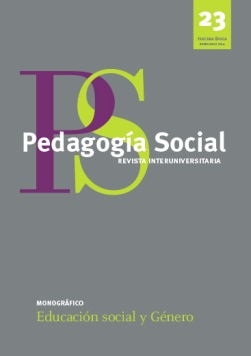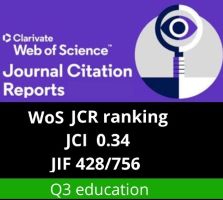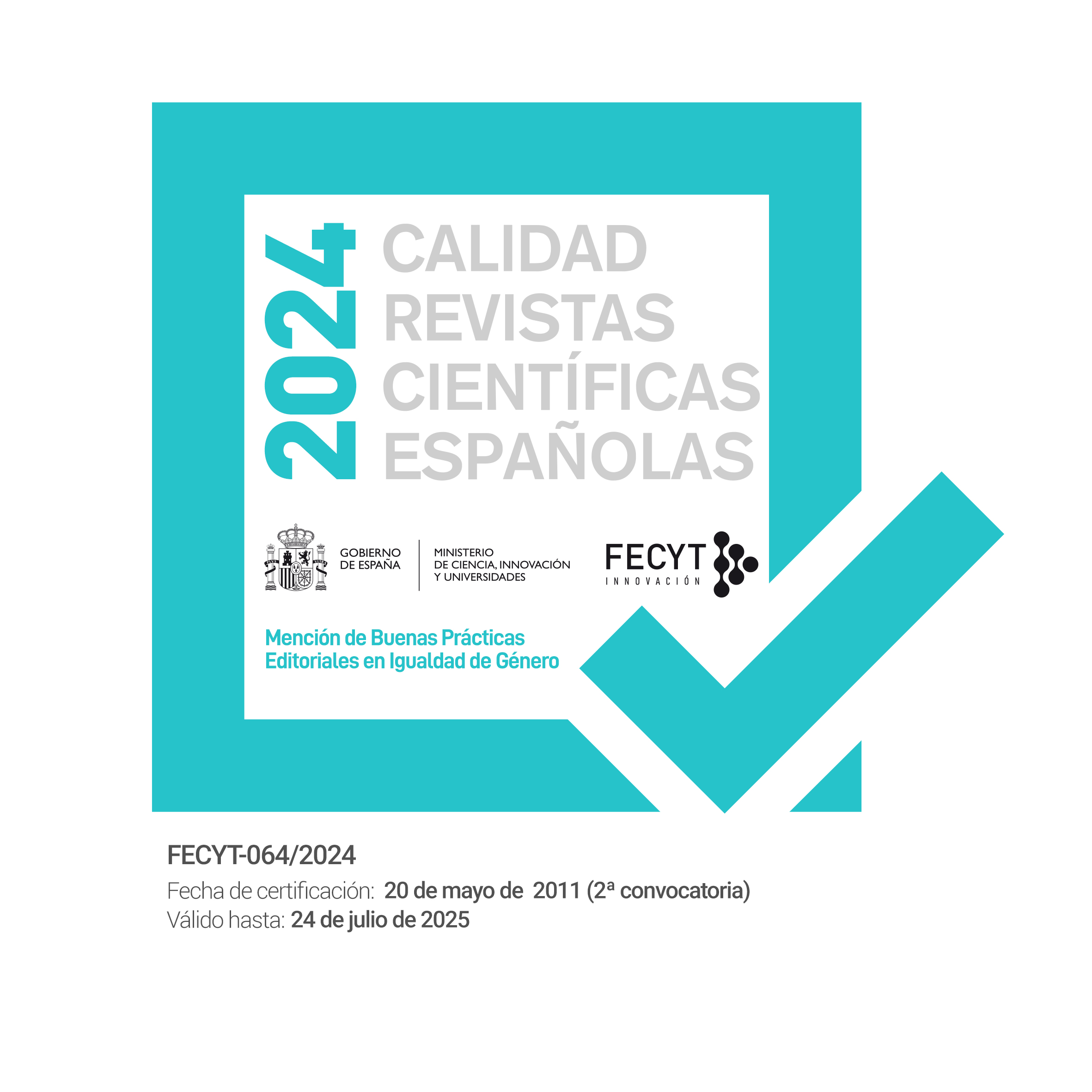Survival and Transcendence of Transnational Indigenous Latina Immigrants (ILIs) in the US
DOI:
https://doi.org/10.7179/PSRI_2014.23.02Keywords:
Transnational, Indigenous, Latina Immigrant, Survival, Immigration, EducationAbstract
Transnational indigenous Latino immigrants today seem to live multiple lives across multiple borders. Based on a 3-year Mix methods research study that took place in a new immigrant-receiving community in North Carolina, the manuscript describes the experiences of Indigenous Latina Immigrants (ILIs) living in the United States, specifically pedagogies of survival based on fluid social identities. The indigenous women who took part in this study had to adopt fluid unknown identities both in the home for cultural survival, and also outside the home (external identities) for physical and social survival, often in hostile environments. In addition, it raises questions about the ways multilingualism affects border mobility and transnationality as well as how indigenous Latina immigrants become Camaleónas guerreras (Chameleon Warriors) who use “critical survival tools” as a transnational bridge to facilitate their survival in a hostile US environment, the community, and in schools.
Downloads
References
Anderson,W. (1997). Familias purépechas en el sur de Illinois: La (re)construcción de la identidad étnica. Paper presented at the XIX Coloquio de Antropología e Historia Regionales, El Colegio deMichoacán, Ciudad de Zamora.
Anzaldua, G. (1987). Borderlands/la frontera: The new mestiza. San Francisco, CA: Aunt Lute Books.
Aranda, E.M. (2006). Emotional bridges to Puerto Rico:Migration, returnmigration, and the struggles of incorporation.New York, NY: Rowman & Littlefield.
Basch, L., Schiller, N. and Szanton Blanc, C. (1994). Nations unbound: Transnational projects, postcolonial predicaments and deterritorialized nation-states. Amsterdam: Gordon & Breach.
Clandinin, D. J., &Connelly, F.M. (2000). Narrative inquiry: Experience and story in qualitative research. San Francisco,CA: Jossey-Bass.
Creswell J. (1998). Qualitative inquiry and research design: Choosing among five traditions. Thousand Oaks, CA: Sage Publications.
Delgado-Gaitan, C. (1990). Literacy for empowerment: The role of parents in children’s education. Bristol: The Falmer Press.
Durand, J., &Massey, D. S. (2004).What we learned fromtheMexicanmigration project. In J. Durand, & D. S.Massey (Eds.), Crossing the border: Research from theMexican migration project (pp. 1-16). Berkeley, CA: University of California Press.
Flores, N., Hernández León, R., & Massey, D. R. (2004). Social capital and emigration from rural and urban communities. In J. Durand, & D. S. Massey (Eds.), Crossing the border: Research from the Mexican migration project (pp. 184-200). New York, NY: Russell Sage Foundation.
Fox, J. (2006). ReframingMexican migration as a multi-ethnic process. Latino Studies, (4), 39-61.
Fox, J., & Rivera-Salgado, G. (Eds.) (2004). IndigenousMexicanmigrants in the United States. La Jolla, CA: University of California, San Diego, Center for Comparative Immigration Studies and Center for US–Mexican Studies.
Gibson,M., Gandara, P., & Koyama, J. (2004). School connections: U.S.Mexican youth, peers, and school achievement. New York, NY: Teachers College Press.
Glick Schiller, N., Basch, L., & Szanton-Blank, C. (1992). Transnationalism: A new analytic framework for understanding migration. In N. Glick Schiller, L. Basch, & C. Szanton-Blank, (Eds.), Toward a transnational perspective on migration (pp. 1-24). New York, NY: New York Academy of Sciences.
González, N. (2001). I am my language: Discourses of women and children in the borderlands. Tucson, AZ: The University of Arizona Press.
Guerra, J. C. (1998). Close to home:Oral and literate practices in a transnationalMexicano community. New York, NY: Teachers College Press.
Machado-Casas, M. (2006). Narrating education of new Indigenous/Latino transnational communities in the South. Unpublished dissertation. Chapel Hill, NC: University of North Carolina at Chapel Hill.
Machado-Casas, M. (2009a). La supervivencia transnacional de inmigrantes indígenas en Estados Unidos por medio de la tecnología informártica. DIDAC, 54, 13-23.
Machado-Casas,M. (2009b). The politics of organic phylogeny: The art of parenting and surviving as transnational multilingual Latino Indigenous immigrants in the U.S. High School Journal, 92(4), 82-99.
Machado-Casas,M. (2010). The newglobal transnational citizen: The role ofmultilingualismin the lives of Latino/s indigenous immigrants in the U.S. CIMEXUS: Revista de InvestigacionesMéxico Estados Unidos, 2(7), 99-123.
Machado-Casas,M. (2010). Puppet Pedagogies: Indigenous Latino Immigrant’s and Public School in theUS. Unpublishedmanuscript.
Massey,D. S. (1999). Internationalmigration at the dawn of the twenty-first century: The role of the state. Population andDevelopment Review, 25(2), 303-323.
Merriam, S.B. (1998).Qualitative research and case study:Applications in education. San Francisco,CA: Jossey-Bass Publishers.
Nieto, S. (2004). Affirming diversity: The sociopolitical context of multicultural education (6th Ed.). New York: Pearson Education.
Ong, A., &Nonini,D. (Eds.) (1997). Ungrounded empires: The cultural politics ofmodernChinese transnationalism.NewYork, NY: Routledge Publishers.
Passel, J. S. & Suro, R. (2005). Rise, Peak, and Decline: Trends in U.S. Immigration 1992–2004. September.Washington DC: Pew Hispanic Center.
Portes, A., & Rumbaut, R. G. (2001). Legacies: The store of the immigrant second generation. New York, NY: Russell Sage Foundation.
Rivera-Salgado, G. (1999).Migration and political activism:Mexican transnational Indigenous communities in a comparative perspective. Ph.D. Dissertation. Santa Cruz, CA: University of California, Santa Cruz.
Sánchez, P. & Machado-Casas, M. (2009). Introduction: At the intersection of transnationalism, Latina/o Immigrants, and education. High School Journal, 92(4), 3-15.
Schiller,N., Basch, L., & Szanton-Blanc,C. (1992). Transnationalism: ANewAnalytic Framework forUnderstandingMigration’. Toward a Transnational Perspective on Migration. N. Glick Schiller, Basch, L., & Szanton-Blank, C. (eds). New York, New York Academy of Sciences: 1-24.
Stephen, L. (2007). Transborder lives: IndigenousOaxacans inMexico, California, andOregon. Durham, NC: Duke University Press.
Trueba, E. (2004). The new Americans: Immigrants and transnationals at work. New York, NY: Rowman & Littlefield Publishers Inc.
Urrieta, L., Jr. (2009). Fighting fromwithin!Chicana andChicano educators inU.S. schools. Tucson,AZ:University of Arizona Press
Valdés, G. (1996). Con respeto. Bridging the distance between culturally diverse families and schools. New York, NY: Teachers College Press.
Vasquez,O.A., Pease-Alvarez, P.,&Shannon, S.M. (1994). Pushing boundaries: Language and culture in aMexicano community. New York, NY: Cambridge University Press.
Vertovec, S. (1999). Conceiving and researching transnationalism. Ethnic and Racial Studies, 22(2).
Zabin, C., Kearney, M., Garcias, A., Runsten, D., & Nagengast, C. (1993). Mixtec migrants in California agriculture: A new cycle of poverty. Davis, CA: California Institute for Rural Studies.
Zentella, A. C. (1997). Growing up bilingual: Puerto Rican children in New York. Malden,MA: Blackwell Publishers.
Downloads
Additional Files
Published
Issue
Section
License
Copyright (c) 2014 Pedagogia Social. Revista Interuniversitaria

This work is licensed under a Creative Commons Attribution-NonCommercial 3.0 Unported License.
Copyright and right to archive
The published version of the articles can be self-archived by their authors in open access institutional and thematic repositories. However, Pedagogía Social. Revista Interuniversitaria must authorize partial or global reutilisation on new papers or publications.
Published papers must be cited including the title of the journal Pedagogía Social. Revista Interuniversitaria, issue, pages and year of publication
Ethical responsibilities
Pedagogía Social. Revista Interuniversitaria does not accept any material that has been previously published in other documents or publications. Authors are responsible for obtaining the required permissions for partial or global reproduction any material from other publications, and to correctly quote its origin.
Pedagogía Social. Revista Interuniversitaria is obliged to detect and report fraudulent practices.
Only those who have intellectually contribute to the development of the paper must appear as authors.
The journal expects authors to declare any commercial partnership that might entail a conflict of interest with respect to the submitted article.
Authors must mention in the article, preferably in the “methodology” section, that the procedures used during the samplings and controls have been made after getting informed consent.
The journal will not use any received contribution in a way other than the goals described in these guidelines.
Copyright Notice
© Pedagogía Social. Revista Interuniversitaria. Papers published in both the printed and online versions of this Journal are property of Pedagogia Social. Revista Interuniversitaria, being required to cite the source in any partial or total reproduction.
Unless otherwise stated, all content of this electronic journal is distributed under "Creative Commons Attribution-Non commercial 3.0 Spain" (CC-by-nc) license for use and distribution. The informative version and the legal text of this license is available here. This has to be expressly stated in this way when necessary.






